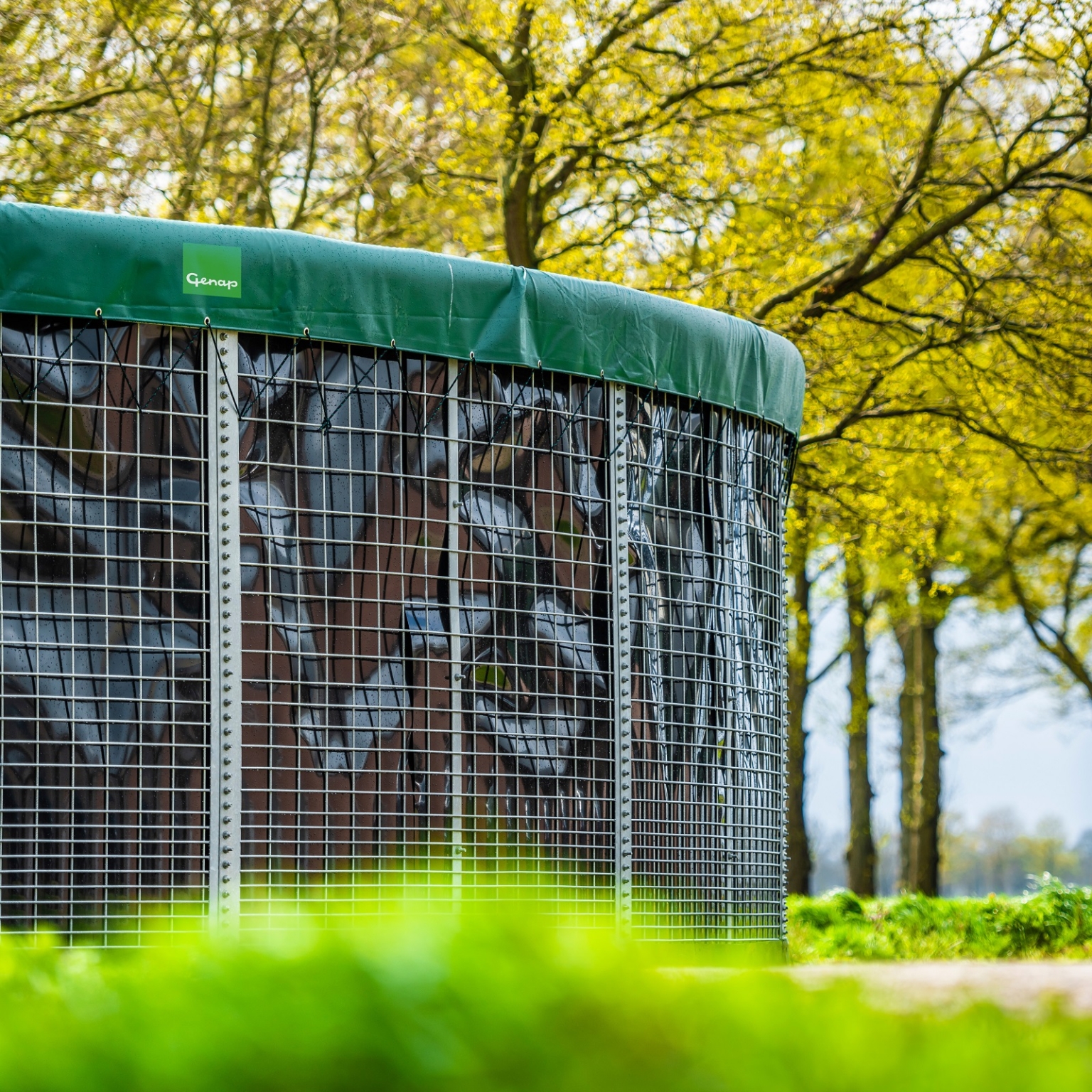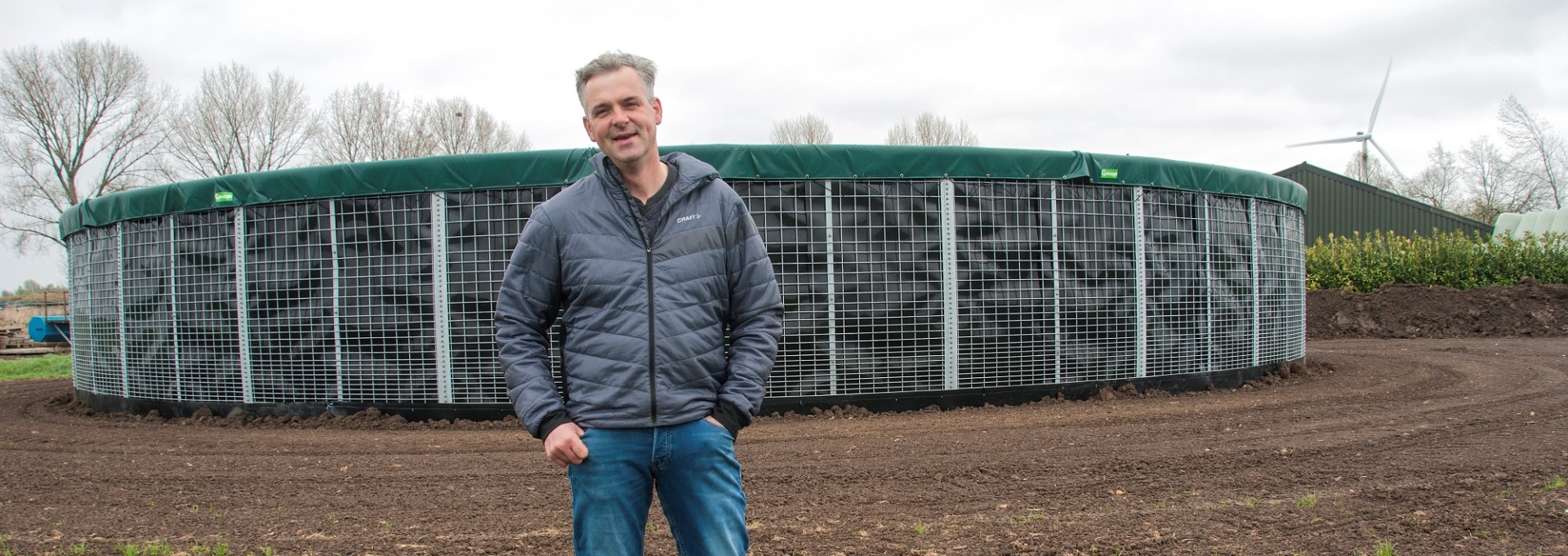The slurry storage of the Dutch dairy farmer Hanco Bastiaansen was quite limited.When the storage was full at the end of winter, it was always a question of whether the conditions were good enough to spread the slurry. Therefore, he had a Mesh silo built, which is relatively quick and easy to install. He is glad that this tension is now gone and that he no longer has to spread slurry under poor conditions.
Many livestock farmers have limited slurry storage. It is often just big enough for all the slurry the livestock produces between August and mid-February, the months when spreading slurry is prohibited. Such limited slurry storage has several disadvantages. Farmers empty the storage as much as possible in August before the spreading ban takes effect. But the yield from fertilization in August is less than from application in the spring. Moreover, it is always a question of how the land will come out of winter in mid-February when spreading is allowed again. If it is too wet or frozen, the slurry must remain in storage even longer.
But when the slurry storage is full, something has to be done: spreading under poor conditions or disposing of it at high costs. Renting slurry storage is also expensive, especially in wet years. It also requires double transportation. If a farmer takes no measures, he might face the same problem again the following year. A larger slurry storage is the structural solution to prevent such undesirable situations.
Hanco Bastiaansen also had limited slurry storage. He only had a slurry pit under his cubicle shed. The dairy farmer runs a business in Etten-Leur with 130 dairy cows and 85 young cattle. He grows grass, maize, and this year, after a long time, fodder beets on his land to increase the nutrient content in the milk. Due to the limited capacity of his slurry storage, he always had to spread slurry until the end of August to have the pit as empty as possible before September. As soon as he was allowed to spread slurry again after mid-February, he did so, even if the conditions were not always optimal. “Sometimes only the driest plot was just suitable for it,” he says. But it had to be done because the slurry pit was full.
More spreading in the spring
He had been unhappy with this for a long time. “I wanted to distribute the spreading of slurry better over the year,” he says. “I wanted to stop earlier in August and spread more in the spring. Then the grass benefits more.” Therefore, Bastiaansen sought a solution. He chose a Mesh silo. “It is relatively inexpensive, quick to install, and you don’t need to drive piles or lay a foundation or rubble bed,” he explains his choice of this type of storage. Also, applying for the required notification or permit is usually quite quick with a Mesh silo. The farmer only had about 20 centimeters dug out and placed the silo on it. He also finds it convenient that the silo can be easily moved if necessary, although he does not plan to do so for now. The silo is quite simple to dismantle and reassemble elsewhere.
Bastiaansen contacted two companies that could supply and install the silo. One of them was Genap. He got in touch with Genap through one of his suppliers, who has good experiences with Genap in installing water basins with foil for horticulture. Of the two suppliers, Genap came out on top. “Due to the good communication and the lower price of the silo,” explains the Brabant dairy farmer.
The storage was completed in mid-January. Installing the silo, including the groundwork, took two days. The silo can hold almost 1,000 cubic meters of slurry. This is a significant expansion of storage capacity because the slurry pit under the barn can hold 2,450 cubic meters. “I now have more than enough capacity,” says Bastiaansen. “The slurry storage can better be a bit larger than a bit too small. Even in a wet spring, I am now sure that the capacity is large enough. There is no longer any pressure from a full silo, forcing me to spread.”
Quick return on investment
Bastiaansen filled the silo immediately as a test. In the meantime, he has also emptied the silo again. The farmer is satisfied with the test: “It went very well.” He did not install a mixer on the silo. Each time shortly before he spreads slurry, he has a contractor come to mix the slurry. Bastiaansen is convinced that the Mesh silo is a responsible investment that he can recoup relatively quickly. But he finds it difficult to make an exact calculation, he says. One of the advantages of larger slurry storage is that he can spread slurry more often at the most optimal moment, especially in the spring. “It’s hard to calculate how big that advantage is,” he explains.
He does not expect to have lower slurry disposal costs now that he has more capacity. There is high demand for his slurry from arable farmers in his immediate vicinity. Due to the sky-high prices of artificial fertilizer, he bought a load of scrubber water from air washers, which he stored in the new silo. In the old situation, he had no storage capacity for this. Moreover, gases can form when the scrubber water comes into contact with slurry. This is not ideal in a pit under the barn where cattle walk. In the new silo, this problem does not exist.








